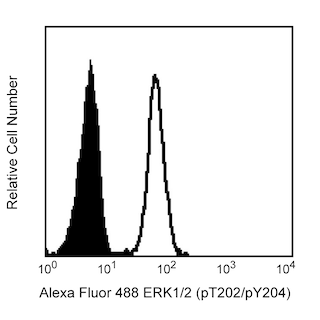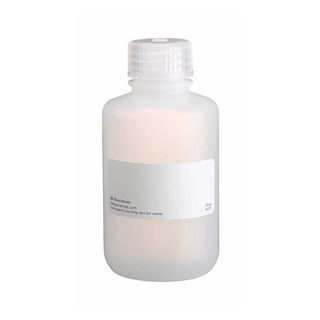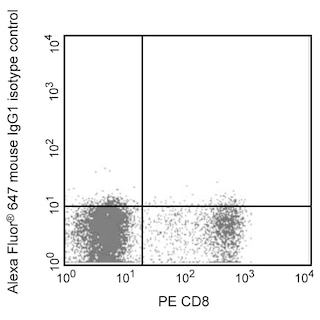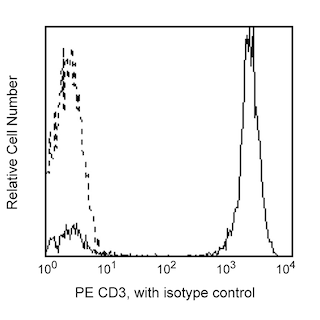-
Training
- Flow Cytometry Basic Training
-
Product-Based Training
- BD FACSDiscover™ S8 Cell Sorter Product Training
- Accuri C6 Plus Product-Based Training
- FACSAria Product Based Training
- FACSCanto Product-Based Training
- FACSLyric Product-Based Training
- FACSMelody Product-Based Training
- FACSymphony Product-Based Training
- HTS Product-Based Training
- LSRFortessa Product-Based Training
- Advanced Training
-
- BD FACSDiscover™ S8 Cell Sorter Product Training
- Accuri C6 Plus Product-Based Training
- FACSAria Product Based Training
- FACSCanto Product-Based Training
- FACSLyric Product-Based Training
- FACSMelody Product-Based Training
- FACSymphony Product-Based Training
- HTS Product-Based Training
- LSRFortessa Product-Based Training
- United States (English)
-
Change country/language
Old Browser
This page has been recently translated and is available in French now.
Looks like you're visiting us from {countryName}.
Would you like to stay on the current country site or be switched to your country?




Two-color flow cytometric analysis of THEMIS expressed in human peripheral blood mononuclear cells. Human peripheral blood mononuclear cells were fixed and permeabilized with BD Phosflow™ Lyse/Fix Buffer (Cat. No. 558049) and BD Phosflow™ Perm/Wash Buffer I (Cat. No. 557885). The cells were then stained with PE Mouse Anti-Human CD3 antibody (Cat. No. 555333/561808/561809) and either Alexa Fluor® 647 Mouse IgG1 κ Isotype Control (Cat. No. 557732; Left Panel) or Alexa Fluor® 647 Mouse Anti-Human THEMIS antibody (Cat. No. 563703; Right Panel). The two-color flow cytometric dot plots showing the correlated expression of THEMIS (or Ig Isotype control staining) versus CD3 were derived from gated events with the forward and side light-scattering characteristics of intact lymphocytes. Flow cytometric analysis was performed using a BD™ LSRII Flow Cytometer System.


BD Pharmingen™ Alexa Fluor® 647 Mouse Anti-Human THEMIS

Regulatory Status Legend
Any use of products other than the permitted use without the express written authorization of Becton, Dickinson and Company is strictly prohibited.
Preparation And Storage
Product Notices
- This reagent has been pre-diluted for use at the recommended Volume per Test. We typically use 1 × 10^6 cells in a 100-µl experimental sample (a test).
- An isotype control should be used at the same concentration as the antibody of interest.
- Caution: Sodium azide yields highly toxic hydrazoic acid under acidic conditions. Dilute azide compounds in running water before discarding to avoid accumulation of potentially explosive deposits in plumbing.
- Source of all serum proteins is from USDA inspected abattoirs located in the United States.
- The Alexa Fluor®, Pacific Blue™, and Cascade Blue® dye antibody conjugates in this product are sold under license from Molecular Probes, Inc. for research use only, excluding use in combination with microarrays, or as analyte specific reagents. The Alexa Fluor® dyes (except for Alexa Fluor® 430), Pacific Blue™ dye, and Cascade Blue® dye are covered by pending and issued patents.
- Alexa Fluor® is a registered trademark of Molecular Probes, Inc., Eugene, OR.
- Alexa Fluor® 647 fluorochrome emission is collected at the same instrument settings as for allophycocyanin (APC).
- For fluorochrome spectra and suitable instrument settings, please refer to our Multicolor Flow Cytometry web page at www.bdbiosciences.com/colors.
- Please refer to www.bdbiosciences.com/us/s/resources for technical protocols.
Companion Products






The Q13-1103 monoclonal antibody specifically binds to human THEMIS (Thymocyte-expressed molecule involved in selection). The human THEMIS gene encodes a 73-kDa signaling protein that is also known as thymocyte selection pathway associated (TSEPA), signaling phosphoprotein specific for T cells (SPOT) and GRB2-associated protein (GASP). The homologous mouse protein is encoded by the Themis gene. THEMIS mRNA is detected in the thymus, lymph nodes, spleen but not in the bone marrow or nonlymphoid tissues. It is expressed by all thymocytes including double- (high levels) and single-positive αβ T cells, γδ T cells and peripheral T cells (low levels) but not by B cells and NK cells. THEMIS plays a central role in T cell development including positive and negative selection processes in the thymus. It is involved in TCR signaling and gets phosphorylated quickly after TCR stimulation. In the mouse system, Themis-deficient double-positive thymocytes reportedly expressed lower levels of genes involved in later stages of T cell development including those related to cellular metabolism, cell cycle and survival functions. Themis-deficient thymocytes showed impaired selection that lead to the production of fewer mature thymocytes. The Q13-1103 antibody crossreacted with mouse Themis in Western blot testing of cellular lysates but did not crossreact when tested by immunofluorescent staining and flow cytometric analysis of cells.
Development References (4)
-
Fu G, Vallée S, Rybakin V, et al. Themis controls thymocyte selection through regulation of T cell antigen receptor-mediated signaling. Nat Immunol. 2009; 10(8):848-856. (Biology). View Reference
-
Johnson AL, Aravind L, Shulzhenko N, et al. Themis is a member of a new metazoan gene family and is required for the completion of thymocyte positive selection. Nat Immunol. 2009; 10(8):831-838. (Biology). View Reference
-
Lesourne R, Uehara S, Lee J, et al. Themis, a T cell-specific protein important for late thymocyte development. Nat Immunol. 2009; 10(8):840-847. (Biology). View Reference
-
Patrick MS, Oda H, Hayakawa K, et al. Gasp, a Grb2-associating protein, is critical for positive selection of thymocytes. Proc Natl Acad Sci U S A. 2009; 106(38):16345-16350. (Biology). View Reference
Please refer to Support Documents for Quality Certificates
Global - Refer to manufacturer's instructions for use and related User Manuals and Technical data sheets before using this products as described
Comparisons, where applicable, are made against older BD Technology, manual methods or are general performance claims. Comparisons are not made against non-BD technologies, unless otherwise noted.
For Research Use Only. Not for use in diagnostic or therapeutic procedures.
Report a Site Issue
This form is intended to help us improve our website experience. For other support, please visit our Contact Us page.